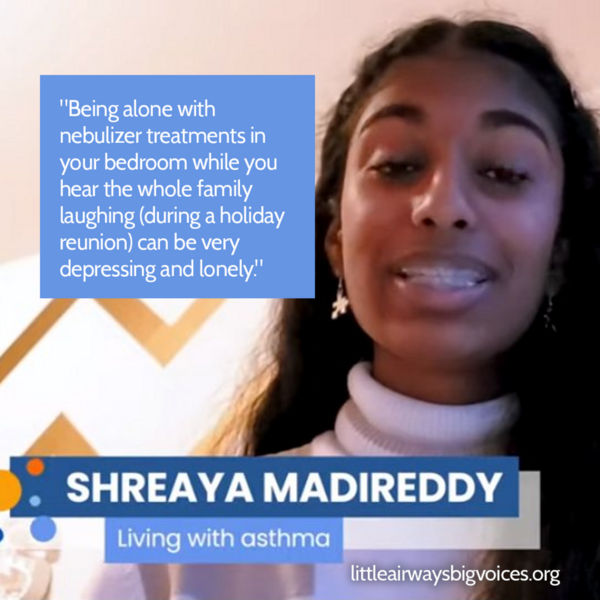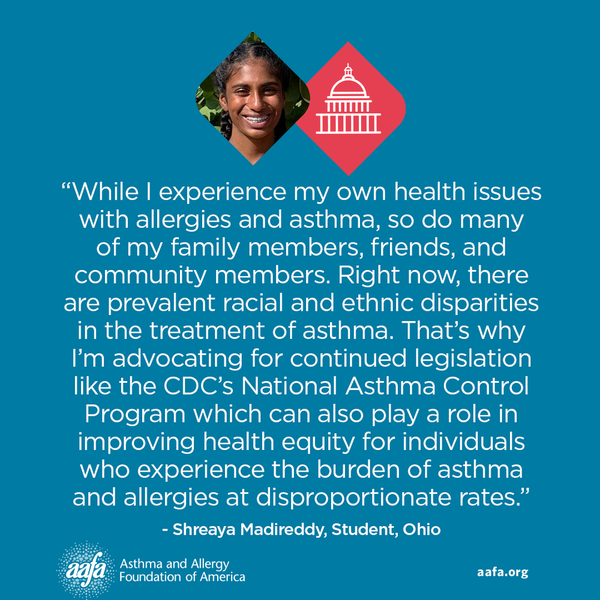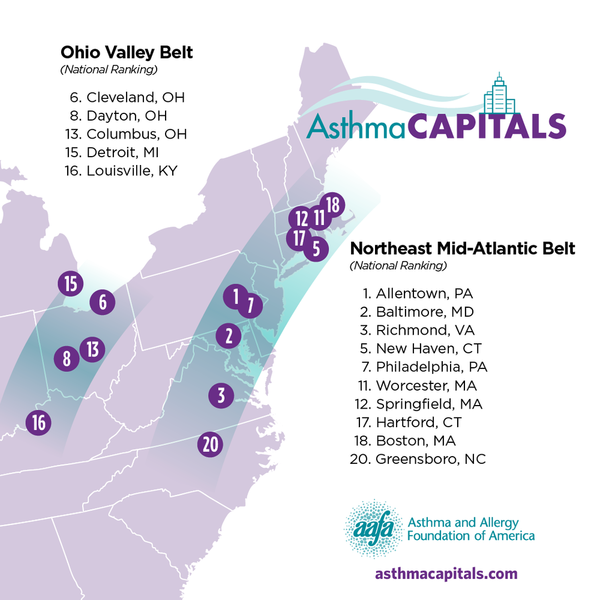“My asthma typically affects me in one of three ways: from my negligence to take my daily dose of my inhaler, from a sinus infection, or by just weakening my overall immune system. Currently taking one inhalation a day from my inhaler relaxes my lung’s airways and allows me to pursue my day-to-day activities or even a rigorous exercise.
However, once I contract a mild cold or sinus infection, the last step of that mucus-filled pathway is wheezing, chest tightness, and nightly asthma attacks. To combat these unsettling side effects of an infection or a cold, I use a nebulizer treatment at least once a day. After said treatment, immediate relief relaxes my lung’s rigid airways, and my breathing can come back to an ease. However, after just about four to six hours, my breathing will revert back to an irregular breathing rate.” – Shreaya Madireddy, AAFA Community Ambassador
Shreaya Madireddy is a senior in high school near Dayton, Ohio. She knows firsthand the challenges of growing up managing asthma. She also has eczema and is allergic to nuts, peanuts, coconut, beans, soy, and some pollens and pets.
The quote above is from when she spoke at the Little Airways, Big Voices meeting in September 2021. She shared her experiences during an externally-led patient-focused drug development meeting (PFDD) with the Food and Drug Administration (FDA) and other stakeholders. The goal of the meeting was to share stories about living with and managing asthma in childhood to improve future asthma treatments.
During the meeting, she shared her opinions on current asthma treatments and hopes for more efficient ones. This included the hope that in the future people “don’t have to experience asthma attacks every time they get a cold.”
When asked about the event she shared, “It was nice to give my opinion about how I think that treatments should be better in the future.”
This wasn’t the first time she shared her journey to help others.
Shreaya is an AAFA Community Ambassador. She shares her experiences to help advance legislation and research. Stories like hers are an important part of AAFA’s advocacy and research efforts.
In April 2021, she participated in AAFA’s Zoom In for Health Equity meeting with Congress. “We discussed legislative acts to improve health equity and expand the CDC National Asthma Control Program,” she recounted.
She enjoyed helping people learn ways to address disparities in health care and help people strive for better health. She also learned some new facts about how the area she lives in may affect her asthma.
“I got to learn more facts about my community and the Ohio community.” These facts included that Cleveland, Dayton, and Columbus, Ohio are all in the top 20 of AAFA’s 2021 Asthma Capitals™ report. They are part of the Ohio Valley Asthma Belt and some of the worst cities to live in with asthma. This is due to poverty, air pollution, and high numbers of medicine use.
While asthma and allergies are a part of Shreaya’s life, they aren’t her whole story. She is the first to tell people, “Don’t let asthma limit anything or restrict anything that you can or cannot do. As long as you take care of yourself, you can take care of whatever your goals are.”
The only way to improve asthma treatments, reduce asthma disparities, and save lives is by working together. And one way to do that is by sharing our stories. We are grateful to Shreaya and other Community Ambassadors for sharing their experiences.
Our mission at the Asthma and Allergy Foundation of America (AAFA) to save lives and reduce the burden of disease for people with asthma and allergies requires a strong network of support. Your tax-deductible donation funds asthma and allergy research, health education, grassroots advocacy, and critical support for families nationwide. Without you, none of this would be possible.
Together, we make a difference in the lives of people affected by asthma and allergies every day. Every gift makes a difference.




Comments (0)